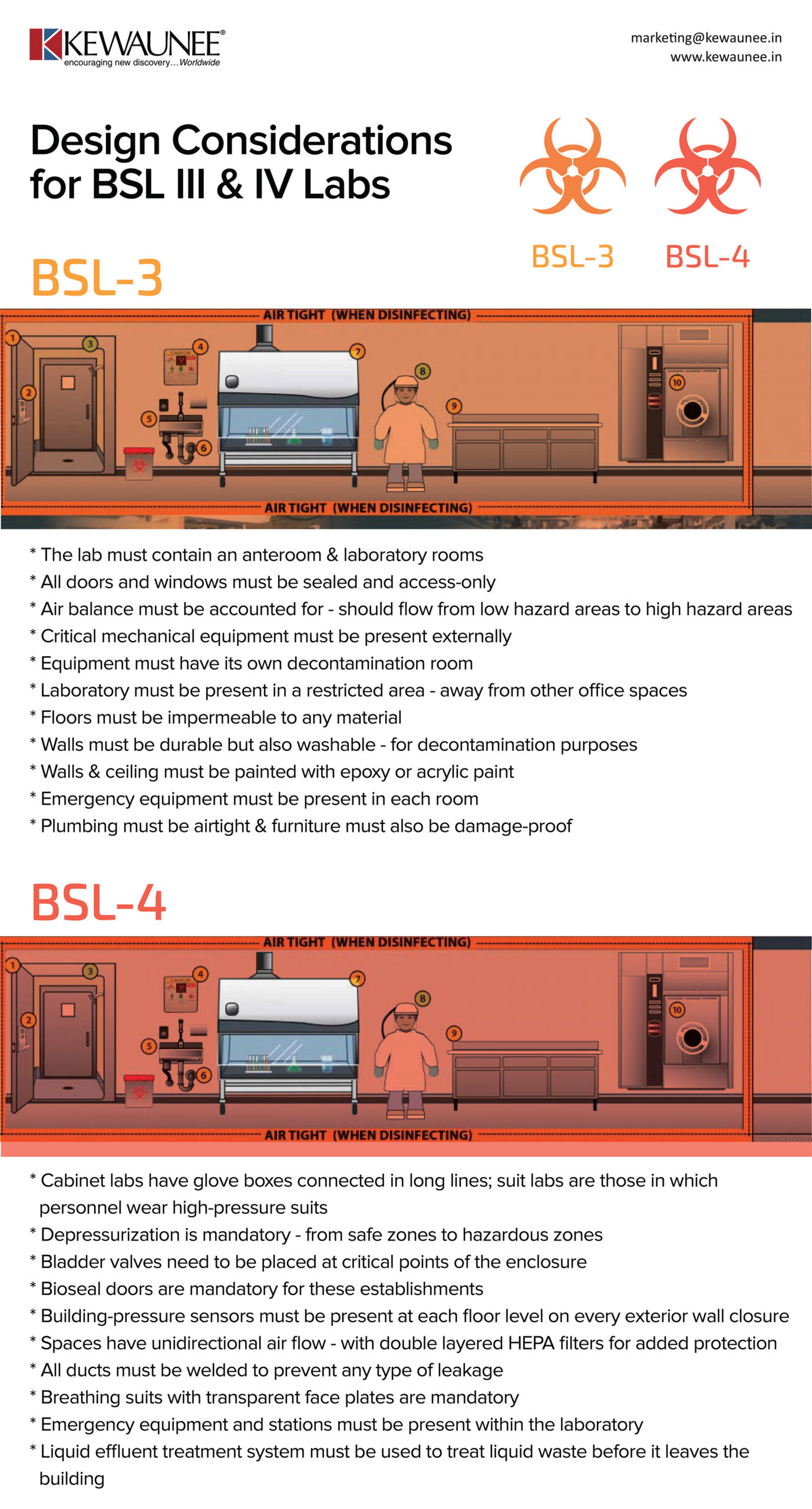Design Considerations For BSL III & IV Labs
In our previous post, we looked at the specific requirements of BSL-I and BSL-II laboratories. The more hazardous the material is, the more containment measures need to be implemented.
In this infographic, we’re going to focus on the specifics of BSL-III and BSL-IV laboratories and what you need to account for before setting up your own containment level.
At Kewaunee International, we’re the experts in understanding your requirements and which laboratory type is best suited for your work. If you’re looking for guidance on the same, contact us today: https://www.kewaunee.in/contact-us.php
| Types of Lab | Design Considerations |
| BSL – III |
|
| BSL – IV |
|
Source: Oregon State University Lab Manual; HPAC Engineering
Comments are closed.











